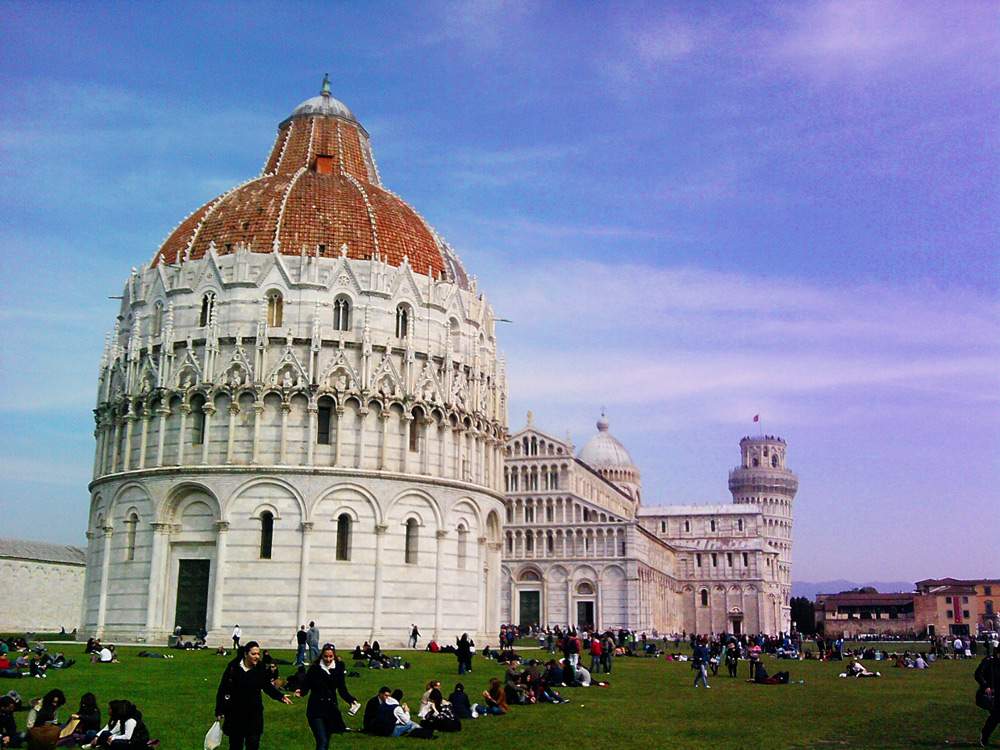The news is from a few days ago: the Pisa City Council approved the project for the construction of a Ferris wheel with a view of the Leaning Tower. The wheel will have a height of fifty-six meters (the same as the Tower) and will be located in the parking lot on Via Pietrasantina, which is about half a kilometer from Piazza dei Miracoli. The City Council’s intention is to make an initial experiment, lasting three months, then to permanently equip the city with the amusement park attraction. The project has obtained the favorable opinion of the superintendence.

It should be pointed out that the Ferris wheel is not expected to entail any costs for the city administration, since implementation, operation and maintenance will be borne by the private party that will win the tender for the project, as La Nazione explains. Nonetheless, it is legitimate to raise numerous doubts about the appropriateness of creating such an attraction, about the idea of tourism and enhancement that the Pisan administration intends to pursue, and about the impact that a Ferris wheel will have on one of the areas with the highest concentration of tourism in the entire country (it is estimated that three million visitors pass through the monumental complex of the Duomo every year).
One could start from the statement of thecouncillor for culture, Andrea Ferrante, who does not skimp on comparisons with other realities: "our city will have a wheel like Paris, London and Vienna. Pisa is a city with a living and strong soul, endowed with a centuries-old history, an urban fabric that has no equal in the world (there is no need to emphasize that Piazza dei Miracoli is unique not only from an artistic and architectural point of view, but also from an urban planning point of view), a historic center that preserves living testimonies of its past. It is home to one of the oldest universities in Europe, as well as to two institutes of excellence such as the Normale and Sant’Anna, and has a cultural life that may not reach the level of the big cities but still has its own connotation. For these reasons, it might be considered vaguely offensive to suggest that Pisa should chase after the three European capitals mentioned by Ferrante, moreover with an attraction that is totally foreign to the city’s history: the Riesenrad in Vienna’s Prater dates back to 1897, and its counterparts in Paris and London, the Grand Roue and the London Eye, are nothing more than modern reinterpretations of the Great Wheels that were built on the fringes of the historic centers of the two capitals in the early twentieth century (the first Parisian Grand Roue was erected during the 1900 World’s Fair, while construction work on the Great Wheel of London began as early as 1894). Pisa has its own specificities, which receive no added value from a fifty-six-meter Ferris wheel.
Specificities that, moreover, often remain unknown to visitors who come to Pisa from all over the world, but who too often limit their visit to the city to the Piazza dei Miracoli alone: the Cathedral area should, if anything, be decongested in favor of greater tourist participation in the life of the city as a whole. Authentic gems such as the National Museum of St. Matthew, the medieval domus, and the numerous churches in the historic center (suffice it to mention the example of San Paolo a Ripa d’Arno, forgotten to the point of pouring for years into total abandonment) remain unknown objects by many tourists. The disproportion is evident if one takes into consideration the visitation data referring to 2014, with 1.7 million visitors entering the Cathedral, 600,000 in the Baptistery, just under 500,000 climbing the Tower, against only 12,000 entering the National Museum of San Matteo. A Ferris wheel placed near the monumental complex therefore goes in the opposite direction of any plan to enhance the historical and cultural fabric of the entire city.
Finally, we need to reflect on the image we want to give our cities. What should they resemble, populated and lived-in centers, or theme parks intended for tourists and from which to oust locals? Should they communicate to tourists that they are unique in the world, or should they ape completely different situations, becoming “medieval-renaissance” style surrogates of London or Singapore? Do we want the traveler to leave our cities culturally enriched, or is it enough for us to simply show them “the Tower of Pisa from above”? In the meantime, in the face of a few scattered reactions against it ( Salvatore Settis ’ adverse opinion and Italia Nostra’s perplexities are noted), a good number of those in favor of the project have also formed, and many have already called for a more central location for the wheel. Some, even, would like to install it on the Lungarni. We, however, do not want to resign ourselves to the idea of a city capable of losing pride in its identity and in need of Ferris wheels to present itself better in the eyes of the world.
Warning: the translation into English of the original Italian article was created using automatic tools. We undertake to review all articles, but we do not guarantee the total absence of inaccuracies in the translation due to the program. You can find the original by clicking on the ITA button. If you find any mistake,please contact us.